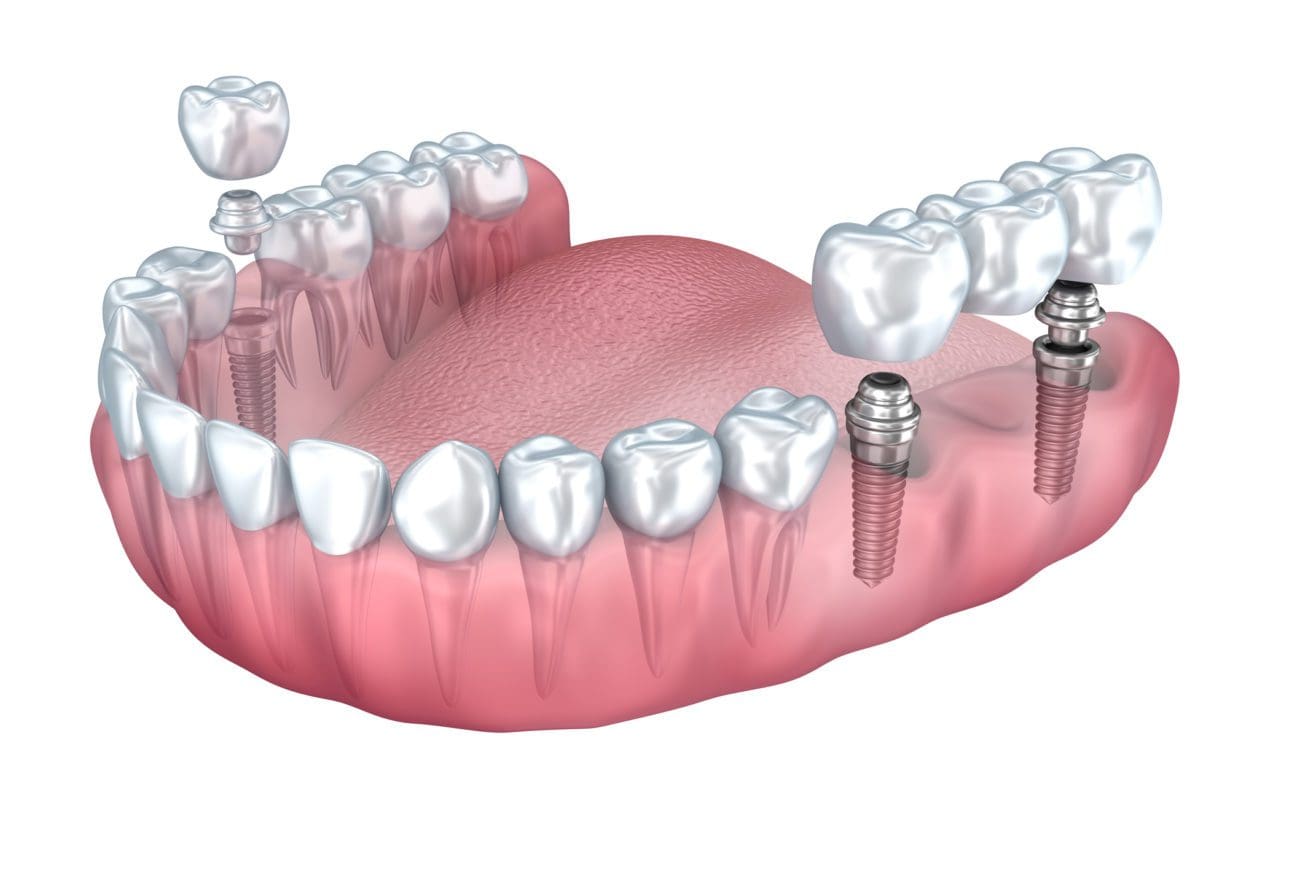See This Report about Dental Sense
See This Report about Dental Sense
Blog Article
Dental Sense - An Overview
Table of ContentsThe Single Strategy To Use For Dental SenseNot known Details About Dental Sense Some Known Questions About Dental Sense.4 Simple Techniques For Dental Sense
are medical tools operatively implanted right into the jaw to restore a person's ability to chew or their look. They offer support for artificial (phony) teeth, such as crowns, bridges, or dentures. When a tooth is shed because of injury or disease, an individual can experience difficulties such as fast bone loss, faulty speech, or adjustments to chewing patterns that cause pain.Oral implant systems include a dental implant body and oral implant joint and may likewise consist of an abutment addiction screw. Professional teeth whitening. The dental implant body is operatively placed in the jawbone instead of the tooth's origin. The oral implant joint is usually affixed to the dental implant body by the abutment fixation screw and extends via periodontals into the mouth to sustain the connected artificial teeth
(https://dentalsense1.carrd.co/)Structure of The Dental Implant System picking oral implants, talk with your dental supplier about the prospective benefits and risks, and whether you are a prospect for the procedure. Points to take into consideration: Your total health is a vital aspect in determining whether you are a great candidate for dental implants, for how long it will certainly require to heal, and how much time the implant may remain in area.
Smoking cigarettes may influence the healing process and reduce the long-lasting success of the dental implant. The recovery process for the implant body might take several months or longer, during which time you normally have a short-term joint instead of the tooth. the dental implant procedure: Meticulously comply with the dental hygiene directions provided to you by your oral copyright.
7 Simple Techniques For Dental Sense
Implant failure can cause the requirement for another operation to take care of or replace the dental implant system. Restores the capacity to eat Restores aesthetic appearance Assists keep the jawbone from shrinking as a result of bone loss Maintains the health of the bordering bone and gum tissues Assists maintain surrounding (close-by) teeth stable Enhances quality of life Damage to bordering all-natural teeth throughout dental implant positioning Injury to the surrounding tissues throughout surgical procedure, such as sinus perforation Injury throughout surgical procedure (for instance, crack of bordering jawbone) Insufficient function, such as seeming like the teeth do not attack with each other typically A feeling that the tooth is loosened or twisting in place arising from an abutment screw loosening Implant body failure (looseness of the dental implant body) due to systemic infection, which might be a lot more most likely in people with unchecked diabetes due to regional infection in bone and periodontals supporting the dental implant body as a result of delayed healing, which might be more probable in patients that smoke Problem cleaning the gums around the dental implant, resulting in poor dental health Neglected periodontal illness Post-surgical pins and needles because of nerve impingement or damages Always alert healthcare carriers and imaging technicians that you have dental implants prior to any kind of magnetic resonance imaging (MRI) or x-ray treatments.
FDA is not knowledgeable about any kind of unfavorable occasions reported for MRI or x-ray procedures with dental implants. Dental implants systems are commonly made from products that comply with global agreement requirements of the International Organization for Standardization (ISO) or ASTM International. These criteria have information of what makes a secure product.

An oral implant is a framework that replaces a missing out on tooth. With screw-like devices, the cosmetic surgeon inserts an implant into the jawbone, and it acts as an anchor for an artificial tooth, called a crown.
4 Easy Facts About Dental Sense Explained
Some people are not qualified for oral implant surgical procedure. It is for oral specialists to run on individuals with: acute illnessuncontrollable metabolic diseasebone or soft tissue illness or infectionIf these issues are fixed, an individual can have the surgical procedure. In, oral cosmetic surgeons abstain from operating on people with: If people with any of the above go through dental implant surgery, there is a higher risk of the implant falling short.

Dental implant surgical procedure is a customized process. It's not the very same for everyone. The complying with offers a general review of what you can anticipate your dentist, oral doctor, periodontist or prosthodontist to do: Position the dental implant operatively. Give you time to recover. Connect the blog post and last crown, bridge or denture.
Next, your doctor will very carefully put the dental implant right into your jaw. Your doctor will reposition your periodontals and shut the cut with stitches. If your implant is view it now near the front of your mouth, your dentist will make a short-lived tooth for you to use until you heal. That means, you won't have a gap in your smile while you recoup.
Indicators on Dental Sense You Should Know
Throughout the healing phase, your jawbone needs to fuse to the dental implant. This process can take anywhere from 3 to nine months.
Once your implant heals, your dentist can attach the joint (tiny port blog post) and your final remediation (crown, bridge or denture). This typically takes about one hour to finish and may need a second minor surgical procedure. You should not really feel any pain during your oral implant treatment because your provider will utilize drug to numb your periodontals.
Report this page